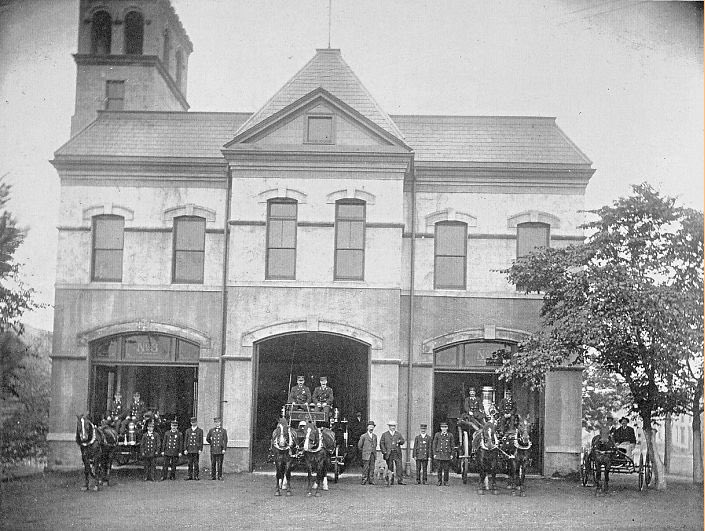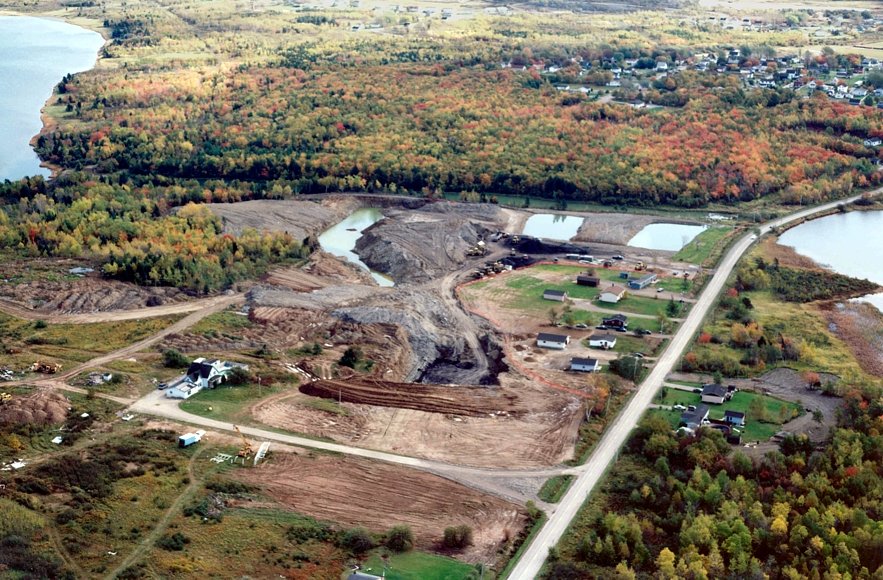Gold was discovered in Oldham, northeast of #Halifax airport, in 1861 by Edward Horne and Samuel Isner.
Read this thread for the history of the Oldham #gold mines!
#nspoli #cbpoli #novascotia @Bill_Horne @SeanFraserMP
@SteveStreatch @MikeSavageHFX #nshistory #mining @NS_Museum

Read this thread for the history of the Oldham #gold mines!
#nspoli #cbpoli #novascotia @Bill_Horne @SeanFraserMP
@SteveStreatch @MikeSavageHFX #nshistory #mining @NS_Museum


They had noticed a large quartz boulder in the woods on hunting trips. They saw #gold in it and triggered a gold rush that resulted in Oldham mines being some of the most productive in #NovaScotia. The area was mined from 1862-1946 and produced a total of 85,178 ounces.
#nspoli
#nspoli

One lot of quartz extracted in 1864 had a phenomenal yield of 103 ounces of #gold per ton. To put that in perspective, successful historical Nova Scotia gold mines often had just one or two ounces of gold per ton.
#nspoli #cbpoli #NovaScotia #nshistory
#nspoli #cbpoli #NovaScotia #nshistory

Today, output at successful gold mines is measured in grams per ton, not ounces. As the world’s richest #gold deposits are mined out, we have to mine lower grade deposits.
#nspoli #cbpoli #NovaScotia #nshistory
#nspoli #cbpoli #NovaScotia #nshistory

Modern science and engineering make that possible – while taking proper care of the environment - but it’s fun to hear stories of such extraordinary yields at historical mines.
#nspoli #cbpoli #NovaScotia #nshistory
#nspoli #cbpoli #NovaScotia #nshistory

One gold nugget found at Oldham in 1874 weighed 61 ounces and at the time was worth $1,135. In today’s prices, that nugget would be worth about $100,000.
Soon after gold was discovered, there was a church, a school and 30 families in Oldham. At its peak, Oldham had 700 residents.
Soon after gold was discovered, there was a church, a school and 30 families in Oldham. At its peak, Oldham had 700 residents.

During Nova Scotia’s first #gold rush, miners dug trenches, typically 15 feet long and eight feet deep, along a shallow lode and then used hammers and chisels to smash quartz and extract it.
#nspoli #cbpoli #NovaScotia #nshistory
#nspoli #cbpoli #NovaScotia #nshistory

In 1872 Oldham had 43,000 feet of open trenches and the whole surface was honeycombed with trenches, shafts and pits, few exceeding 60 feet in depth.
On one hand, a lot of #gold was extracted in those early years through trenching.
#nspoli #cbpoli #NovaScotia #nshistory
On one hand, a lot of #gold was extracted in those early years through trenching.
#nspoli #cbpoli #NovaScotia #nshistory

On the other hand, it was inefficient and it limited miners to surface deposits. We say that new mines are often found next to old mines for this reason – modern science and engineering allow us to fully extract sites that were just partially mined 100-150 years ago.
#nspoli
#nspoli

Another common gold mining method in the first gold rush was panning for gold in alluvial deposits (i.e. in rivers, streams and beaches). Henry Reeves, pictured below in 1912, panned for #gold in Oldham. He swirled water and gravel in a pan.
#nspoli #cbpoli #NovaScotia #nshistory
#nspoli #cbpoli #NovaScotia #nshistory

#Gold, which is very heavy, settled on the bottom of the pan while the lighter gravel and dirt washed over the side. Panning was a simple but effective small-scale method of mining.
#nspoli #cbpoli #NovaScotia #nshistory
#nspoli #cbpoli #NovaScotia #nshistory

Reeves, from #Dartmouth, went to #Boston at the age of 16 to learn the trade of cabinet-making. He fought in the Union Army in the last year of the Civil War, replacing his married brother who had been drafted.
#nspoli #cbpoli #NovaScotia #nshistory
#nspoli #cbpoli #NovaScotia #nshistory

He returned to #NovaScotia in 1866 during the #gold rush and spent the rest of his life prospecting. He died in 1927 at the age of 87.
#nspoli #cbpoli #nshistory
#nspoli #cbpoli #nshistory

• • •
Missing some Tweet in this thread? You can try to
force a refresh



























